3.1 Einflüsse von Schönheit und Kunst
4 min read•june 18, 2024
Nathan Wichert
AP German 🇩🇪
29 resourcesSee Units
Wie beeinflussen Schönheit und Ästhetik den Alltag❓
- Architecture in Germany has been greatly influenced by the styles in architecture and art of other European countries. These styles were born and developed from the ancient period of Charlemagne’s Empire to modern history after World War II.
- Historic cities such as Berlin, Munich, and Cologne are home to the full timeline of German architectural trends from the pre-medieval Carolingian to Medieval Romanesque, Gothic, Renaissance, Baroque, and the later Neo-Classical and Neo-Renaissance eras.
Architecture and design 🏛️ 🏘️ 🏫
Germany is filled with an incredible variety of architectural styles with powerful landmark structures in the hearts of cities, Disney-esque castles in the southern most region, and rural historic homes sprawling across the countryside. Traditional timbered German houses and chalets can be found all over the south of the country, while Baltic brick homes from the Medieval era are still found in northern towns today. In the cities, a blend of Gothic and Romanesque structures sit happily alongside Bauhaus, Modernist, and Contemporary buildings.
📜 A Brief History 📜
The most ancient architectural designs are from 800 AD when German architecture was featured with the mosaics and bright miniatures in the Carolingian style of art.
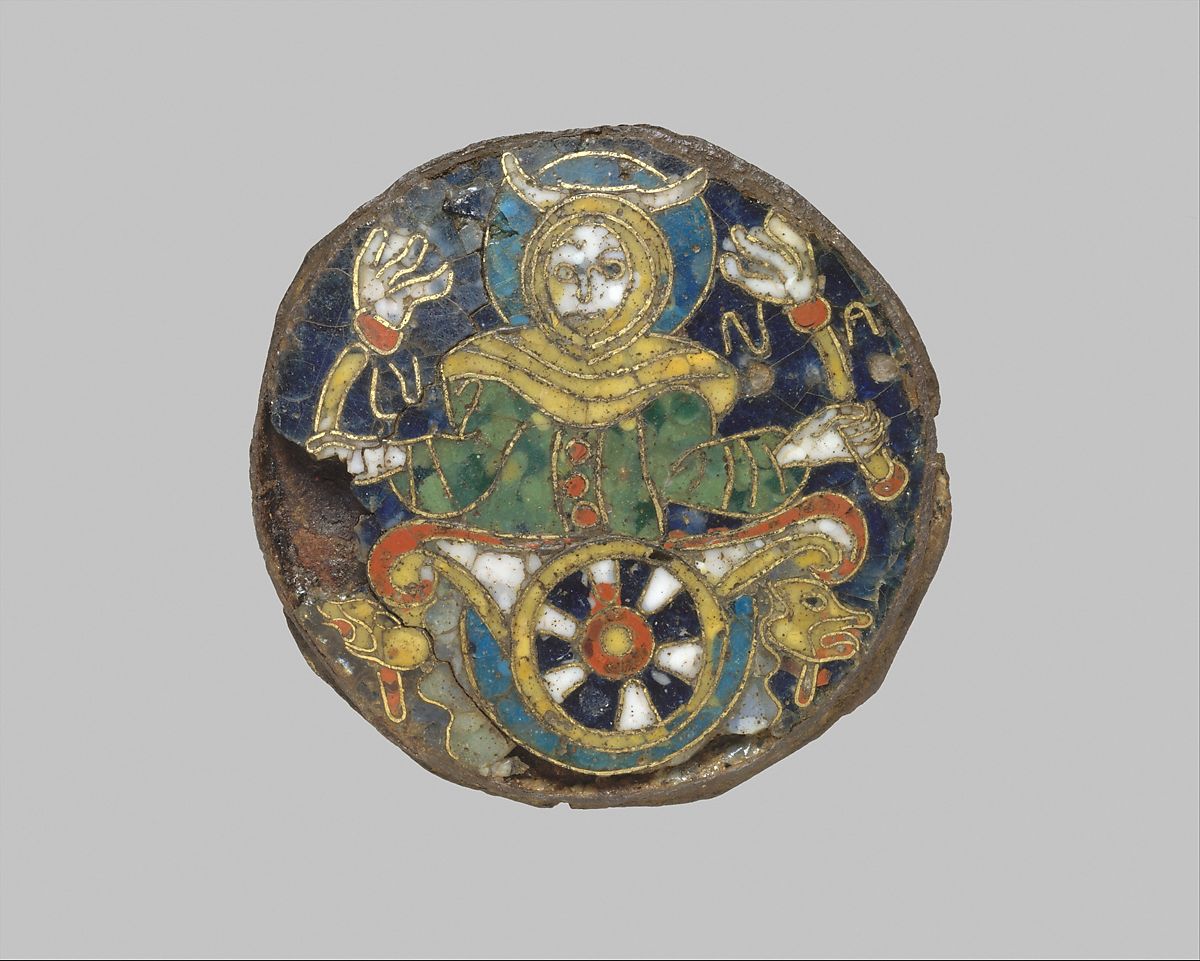
Image taken from metmuseum.org.
The period of German architecture from 780-900 AD is known as Carolingian. The Carolingian influence made its way to the masses and artists presented their work on massive items such as doors, walls, and ceilings of the German chapels and churches ⛪
After the Carolingian years came the flourishing of the Romanesque style. This style was quickly forgotten because the incredibly well-known Gothic style was developing at the same time as Romanesque art 🎨
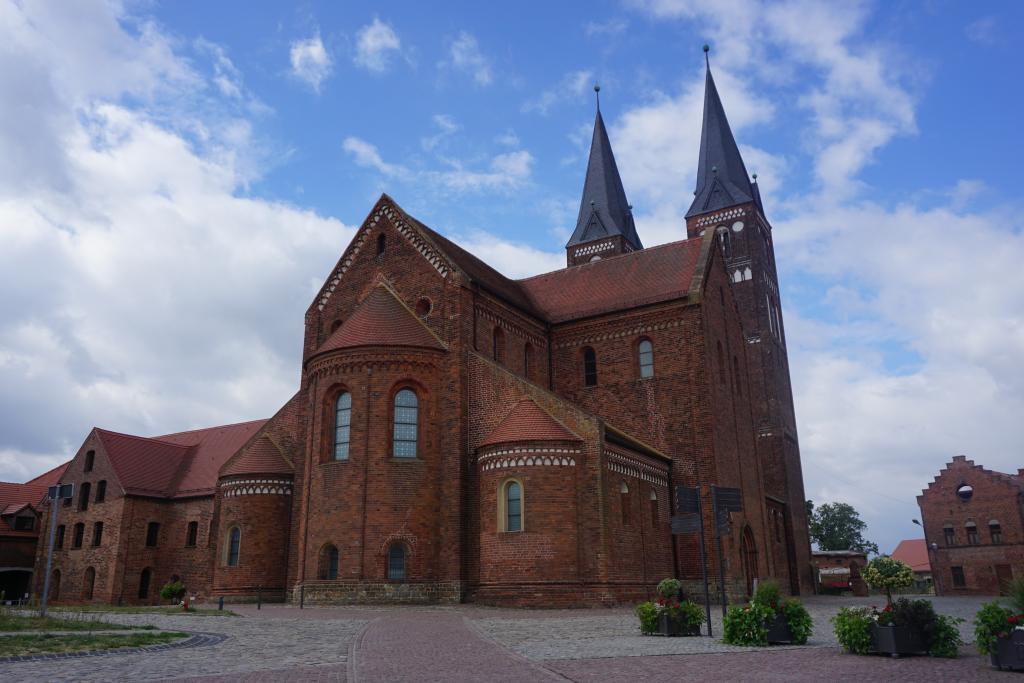
Image taken from europeupclose.com.
German architects 📐, painters 🖌️, and sculptors ⚒️ preferred the Gothic style for their country's cathedrals and churches ⛪ One of the most famous examples of Gothic churches is the Sankt Michael Kirche in Munich.
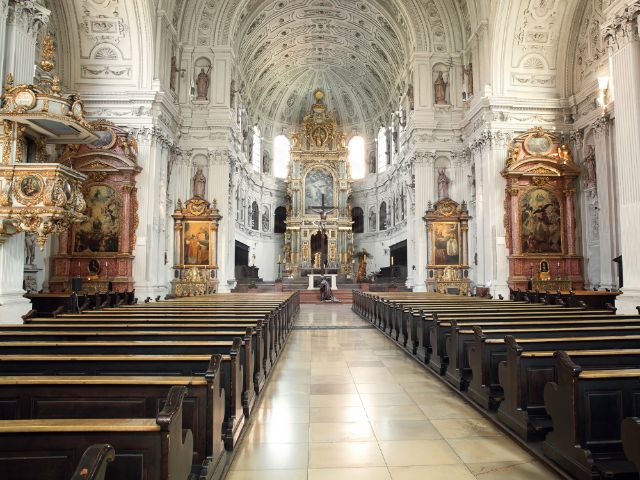
Image taken from muenchen.de.
The next style of art is the Baroque style, characterized by miniature statuettes and extremely luxurious décor inside of palaces.
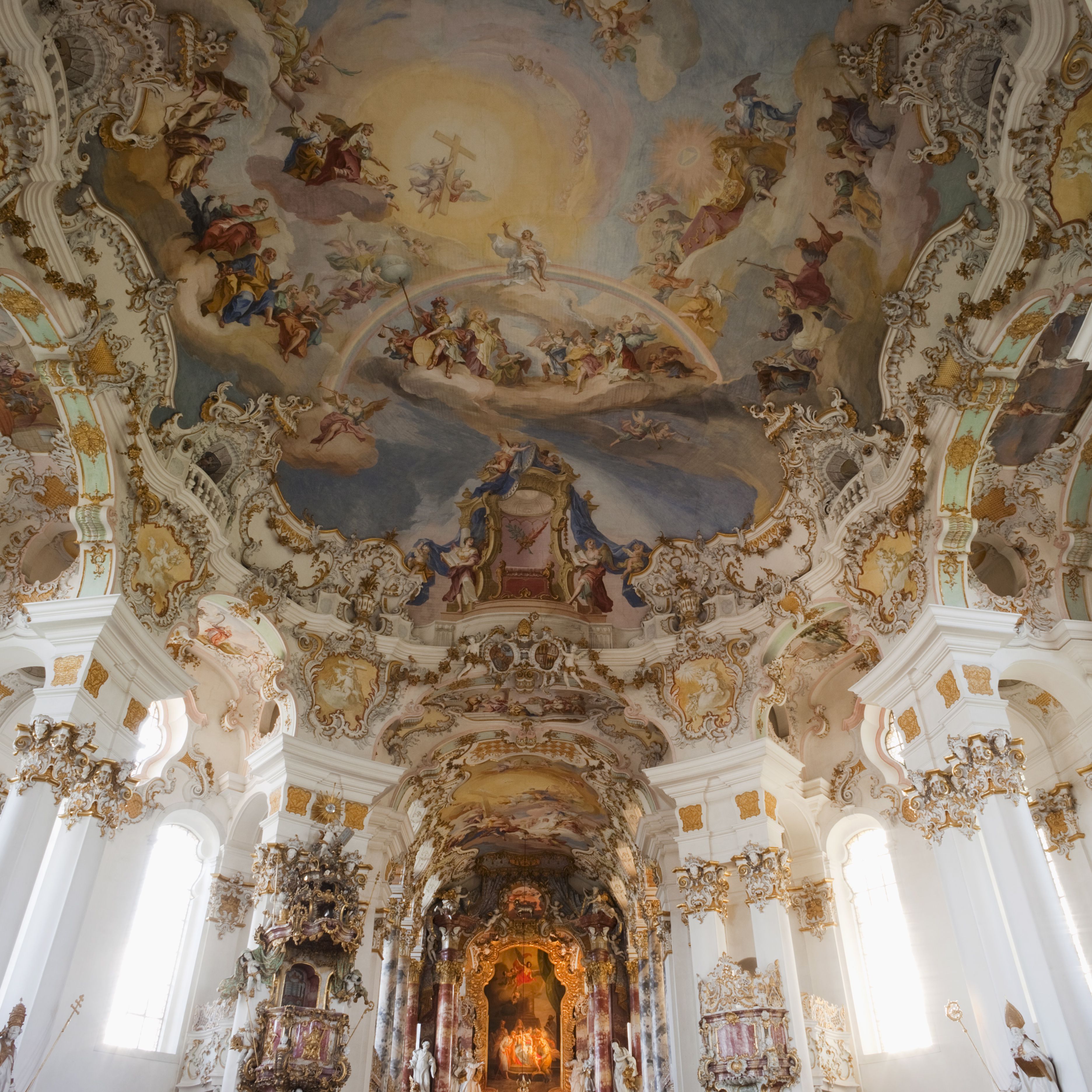
Image taken from tripsavvy.com.
The modern directions of Realism and Expressionism began in the nineteenth century and developed till the middle of the twentieth century when World War II started.
Bauhaus
Several styles of avant-garde throughout the 20th century shaped modern art. Many of these genres include those based in the subconscious. Just as surrealism and abstract expressionism appeared most often as paintings, the Bauhaus movement appeared in a wide array of mediums, materials, and disciplines.
Surrealism:
A 20th-century avant-garde movement in art and literature which sought to release the creative potential of the unconscious mind, like with the irrational juxtaposition of images (lexico.com).

Image taken from artsy.net
Abstract Expressionism:
A modernist movement, initially in poetry and painting, originating in Germany at the beginning of the 20th century. Its typical trait is to present the world solely from a subjective perspective, distorting it radically for emotional effect in order to evoke moods or ideas (webarchive).
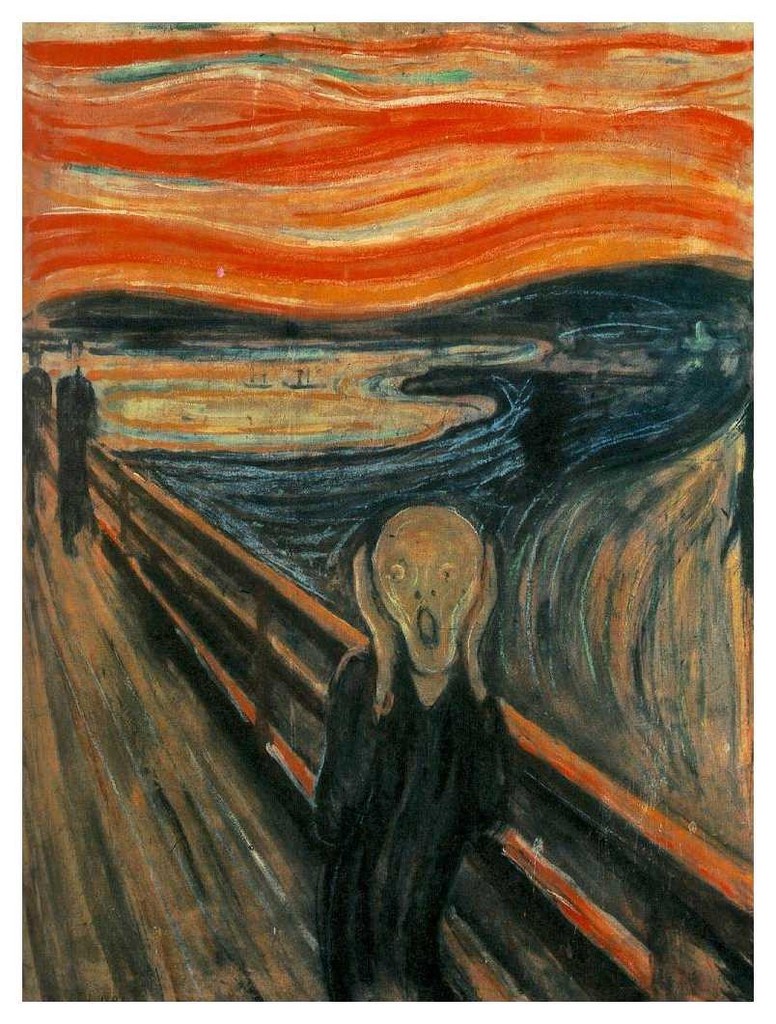
Image taken from medium.com
Bauhaus art dominated many outlets of experimental European art throughout the 1920s and 1930s and ranged from paintings and graphics to architecture and interiors. Though it is most closely associated with Germany, it attracted and inspired artists of all backgrounds. Today, its influence can be found in art and design all over the world, whether within the walls of a museum or on a suburban street.
Bauhaus literally translated means “construction house.” The movement originated as a German school of the arts in the early 20th century and was founded by Walter Gropius. The school eventually morphed into its own modern art movement characterized by its unique approach to architecture and design.
Bauhaus as an educational institution existed in three cities:
Weimar (1919 to 1925)
Gropius laid the foundation for what Bauhaus was to become in Weimar. Art, according to his manifesto and to the program as a whole, should serve a social role and should no longer be a division of craft-based disciplines.

Image taken from flickr.com.
Dessau (1925 to 1932)
The movement spread to Dessau after the politically motivated closure of the Weimar facilities. Dessau set forth on the path of designing new industrial products for mass consumption.

Image taken from koreajoongangdaily.joins.com.
Berlin (1932 to 1933)
Berlin was the last phase of Bauhaus. The time in Berlin was ultimately cut short due to mounting pressures from the Nazis and cutbacks in funding. The teaching staff dissolved the Bauhaus in July 1933. But even after facing permanent closure, the influence and aesthetic of the school persisted, culminating in the Bauhaus movement.
Browse Study Guides By Unit
👨👩👧Unit 1 – Families in Germany
🗣Unit 2 – Language & Culture in Germany
🎨Unit 3 – Beauty & Art in Germany
🔬Unit 4 – Science & Technology in Germany
🏠Unit 5 – Quality of Life in Germany
🌪Unit 6 – Challenges in Germany
📚Study Tools
🧐Exam Skills

Fiveable
Resources
© 2025 Fiveable Inc. All rights reserved.